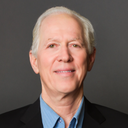Lifting skin and trimming the excess has been the standard approach to the treatment of facial aging for centuries, but when performed without some means of restoring the youthful fullness of facial soft tissues, the result is an older-looking person with tighter skin. The word 'rejuvenation' means literally 'to restore youthfulness' or 'to make young again', so if the goal of surgery is to rejuvenate the face then it cannot be accomplished solely by means of redraping the skin and removing the excess.

